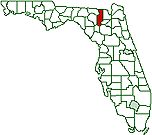FL: More Kids Growing Up In Poor Neighborhoods
Posted February 29, 2012 06:55 am
TALLAHASSEE, FL - A new "Kids Count" Data Snapshot from the Annie E. Casey Foundation released today shows that the number of children living in high-poverty communities has increased by 28 percent in Florida. In high-poverty neighborhoods, 30 percent or more of the residents are below the poverty line.
Links:
Kids Count Data Center
Annie E.
Casey Foundation
Laura Speer is the associate director of policy
reform at the Casey Foundation. She says children in
these neighborhoods face challenges in almost every
aspect of their lives that make it less likely they will
reach their full potential as adults.
"They have harmful levels of stress; they're more likely
to have behavioral and emotional problems; they have
more trouble in school and have lower test scores."
According to the data, just over 340,000 children in
Florida are living in poverty-stricken neighborhoods.
Speer notes that about 75 percent of children living in
an area of concentrated poverty have at least one parent
working. Even if a family is not officially "in poverty"
according to federal standards, she says it still harms
children when a lot of other people in the neighborhood
are under that line.
"Living in an area of concentrated poverty limits the
opportunities families have available to get a better
job to make sure the health and the welfare of their
children is taken care of."
The report calls for transforming disadvantaged
communities. It offers several recommendations that can
be tailored to each area, Speer says, with the idea of
making those neighborhoods better places to raise
children.
"We know it's important to support the families in the
communities in terms of giving them access to financial
coaching, as well as helping them gain employment
skills."
In many projects showcased as success stories,
institutions near high-poverty zones are involved in
revitalization and education initiatives.
The data also identifies which children are most likely
to live in high-poverty communities, Speer says.
"Children of color in the United States are much more
likely to have poverty within their households be
compounded by also living in a high-poverty neighborhood
and everything that means."
African-American, American Indian and Latino children
are six to nine times more likely to live in
high-poverty communities than their white counterparts.
And no matter what their race or ethnicity, children in
the South and Southwest are more likely to live in areas
of concentrated poverty.
Original
publication date: Feb 23, 2012
